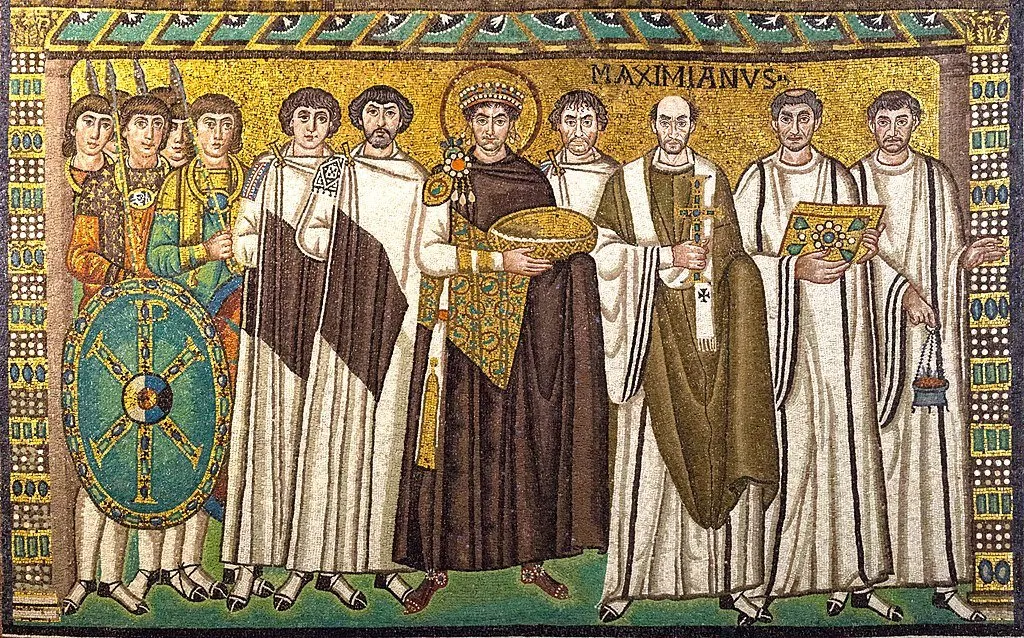Picture this: it’s the year 500 AD. The Roman Empire is gasping its last breaths in the West, and a new world order is emerging. Join us on a captivating journey through the 6th century—an era of seismic shifts, groundbreaking ideas, and momentous events that shaped the course of history and continue to resonate today. From the fall of empires to the rise of new kingdoms, from the spread of faith to the establishment of monasteries, we’ll delve into this pivotal chapter of our past and uncover its lasting impact on the present.
When Was the 6th Century?
Ever found yourself wondering, “When exactly was the 6th century?” It represents a fascinating period stretching from 501 to 600 AD, serving as a bridge between the old world of Roman emperors and sprawling empires and the dawn of the Middle Ages.
This wasn’t merely a turn of the calendar page. The 6th century witnessed major global transformations. Kingdoms ascended and crumbled, new religions took root, and cultures intertwined in ways that continue to shape our world. It was an era marked by both turmoil and remarkable innovation, setting the stage for the world we know today. Do you have a fascination with ancient history and are curious about the timeline of past events? Discover the answer to your question about how long ago was the 6th century by clicking here.
4 Key Insights into the 6th Century:
- Historical Shifts: The 6th century (501-600) marked a period of significant historical change, witnessing the decline of classical antiquity in the West and the emergence of the Middle Ages.
- Major Events: This era encompassed pivotal events such as the founding of Uxmal in Mexico, the rise of Christian monasticism in Ireland and Wales, and the introduction of silkworm cultivation to the Roman Empire.
- Influential Figures: The 6th century saw the rise of influential figures like Boethius, the renowned philosopher known for his work “On the Consolation of Philosophy,” and Clovis I, the Frankish king who expanded his kingdom through strategic military conquests.
- Cultural Advancements: Culturally, the 6th century witnessed significant developments, including the creation of the Anno Domini dating system, still in use today, and the spread of Zen Buddhism in Vietnam.
What Defined the 6th Century?
The 6th century wasn’t simply another century; it was a pivotal turning point in history, marking the end of an era and the beginning of a new one. In the West, the Roman Empire breathed its last, while the seeds of the Middle Ages were being sown in Europe. Profound changes swept across the globe—in culture, politics, and religion—leaving an indelible mark on history.
Imagine a redrawn map of Europe. That’s precisely what transpired as the mighty Roman Empire fragmented in the West. New Germanic kingdoms, such as those of the Franks and Visigoths, rose to prominence. Meanwhile, in the East, the Roman Empire lived on as the Byzantine Empire, preserving Roman traditions and evolving into a powerhouse in its own right. The Byzantines bequeathed to us Justinian’s Code, a comprehensive legal system that continues to influence law to this day.
This era also witnessed the birth of Islam in Arabia. This was not merely a new religion; it reshaped the Middle East and beyond, profoundly impacting politics, society, and culture. In Europe, monasteries flourished as Christianity spread rapidly. These developments weren’t fleeting trends; they fundamentally altered how people lived, thought, and worshipped. The 6th century was a whirlwind of change, setting the stage for the world we inhabit today.
Major Events of the 6th Century: A Timeline
The 6th century was a tumultuous period, brimming with events that reshaped the world as we know it. Let’s delve into some of the most significant headlines from this era:
507: Clash of the Titans at Vouillé ⚔️
The Battle of Vouillé witnessed a clash between two formidable forces—the Visigoths, a Germanic tribe, and the Franks. The Visigoths emerged victorious, solidifying their control over a significant portion of Western Europe. This victory marked a major power shift in the region.
525: Time Gets an Upgrade: Introducing AD 🗓️
The year 525 marked the introduction of the Anno Domini dating system, which translates to “in the year of the Lord.” Devised by the monk Dionysius Exiguus, this system provided a standardized calendar that is still widely used today.
527-565: The Byzantine Empire Strikes Back 🏛️
Under the reign of Emperor Justinian I, the Byzantine Empire experienced a resurgence. Justinian led the empire in reclaiming lost territories and established the Justinian Code, a comprehensive legal framework. This period is considered a golden age for the Byzantine Empire.
532: Chaos in Constantinople: The Nika Riots 😠
The Nika Riots erupted in Constantinople, the Byzantine capital, as citizens revolted against high taxes and government corruption. This event underscored that even the most powerful rulers could not ignore the will of the people.
536-542: Volcanoes, Plagues, and a Recipe for Disaster 🌋🦠
A series of volcanic eruptions plunged the world into a volcanic winter, characterized by prolonged periods of darkness and cold. To compound matters, the bubonic plague emerged, leading to widespread famine, death, and suffering across Europe.
589: China Gets Back Together 🧩
After 150 years of fragmentation, China was reunited under the Sui dynasty. This reunification ushered in a period of stability, a strengthened economy, and a new chapter in Chinese history.
Key Takeaways: A Century of Transformation
- The 6th century served as a bridge between the era of classical antiquity and the medieval period.
- Germanic tribes emerged as major players on the European stage, reshaping the political landscape.
- The Byzantine Empire exerted its influence in the East.
- Christianity continued its spread and gained increasing influence.
- Natural disasters and disease outbreaks highlighted the fragility of life.
Cultural and Religious Shifts in the 6th Century
The 6th century was a period of profound cultural and religious transformation. Christianity, once a fledgling religion, ascended to become the dominant faith, overshadowing the old Roman gods. This shift was reflected in the art of the time, as mosaics, paintings, and even architecture bore witness to the pervasiveness of Christian themes.
In Western Europe, the classical world of the Romans faded as new powers, including the Visigoths and Franks, took center stage. These groups brought with them their own distinct cultures and systems of governance, forever altering the political map.
In the East, Emperor Justinian sought to revive the glory of the Roman Empire, launching military campaigns to reclaim lost territories in the west. While these efforts ultimately proved unsustainable, they underscored the enduring strength of the Byzantine Empire.
As the Roman Empire’s grip on the West weakened, Germanic kingdoms proliferated. The Franks, Visigoths, and others carved out their own domains, each with its own distinct identity. Europe was no longer a unified entity but a patchwork of cultures and powers.
Key Cultural and Religious Shifts:
- The Rise of Christianity: Christianity’s influence permeated every aspect of life, from art and culture to daily practices.
- The Decline of Classical Antiquity: The classical Roman world gave way to the influences of Germanic tribes.
- Justinian’s Legacy: While his efforts to rebuild the Roman Empire eventually faltered, his military achievements left a lasting impact on both the East and West.
- The Emergence of New Kingdoms: The 6th century witnessed the birth of numerous Germanic kingdoms in Europe, each with its own distinct character and ruler.












Comments are closed.